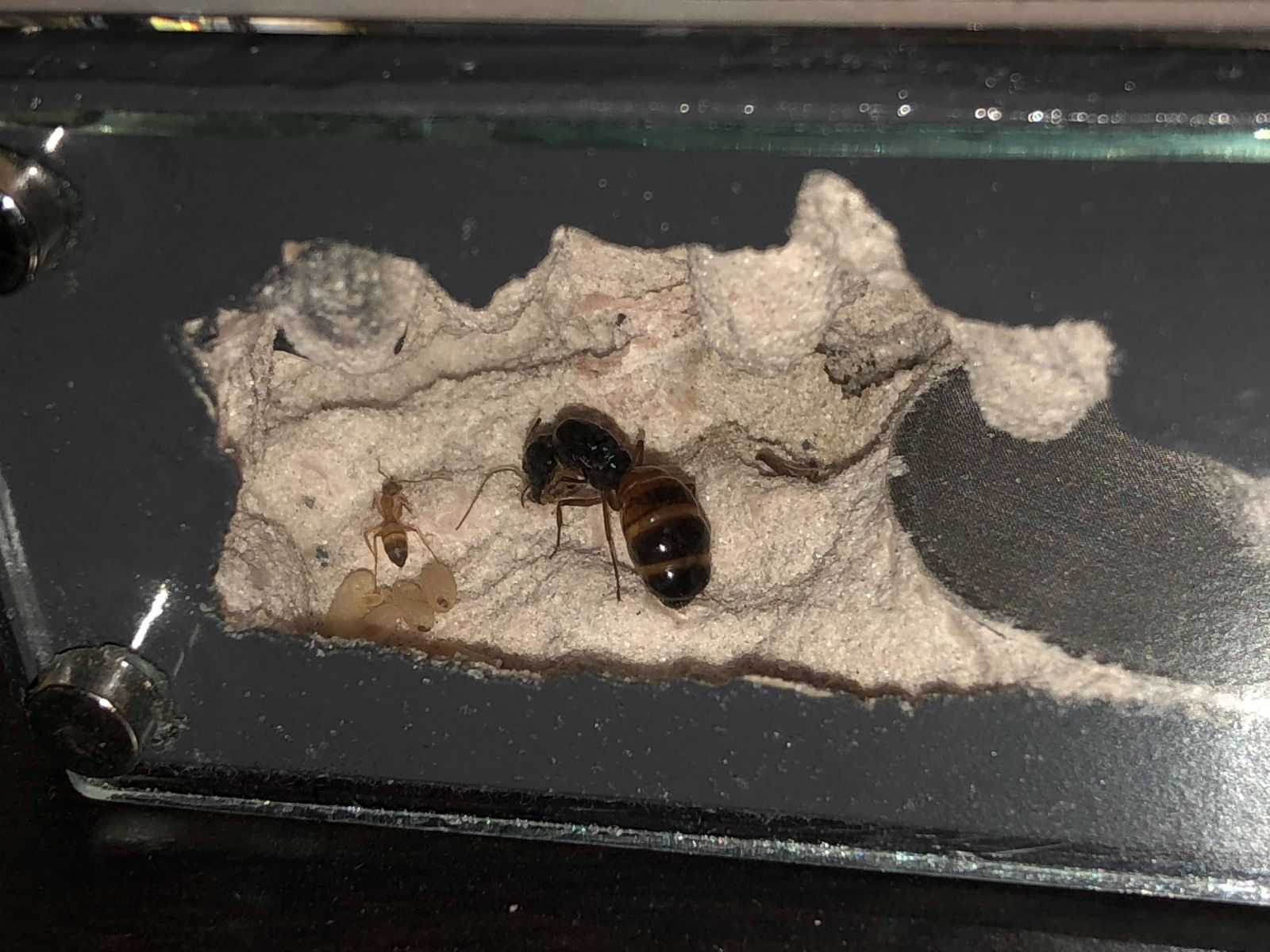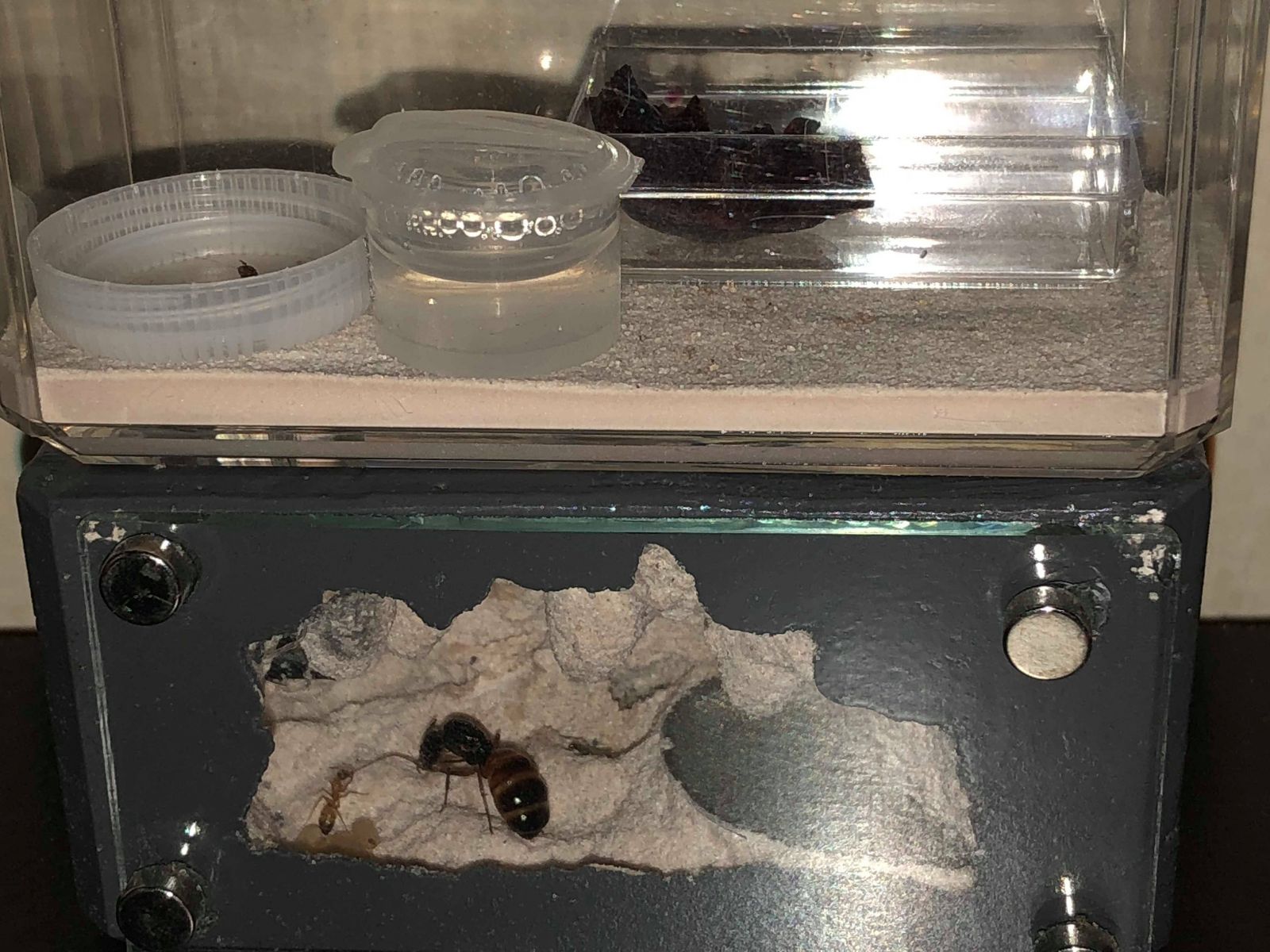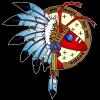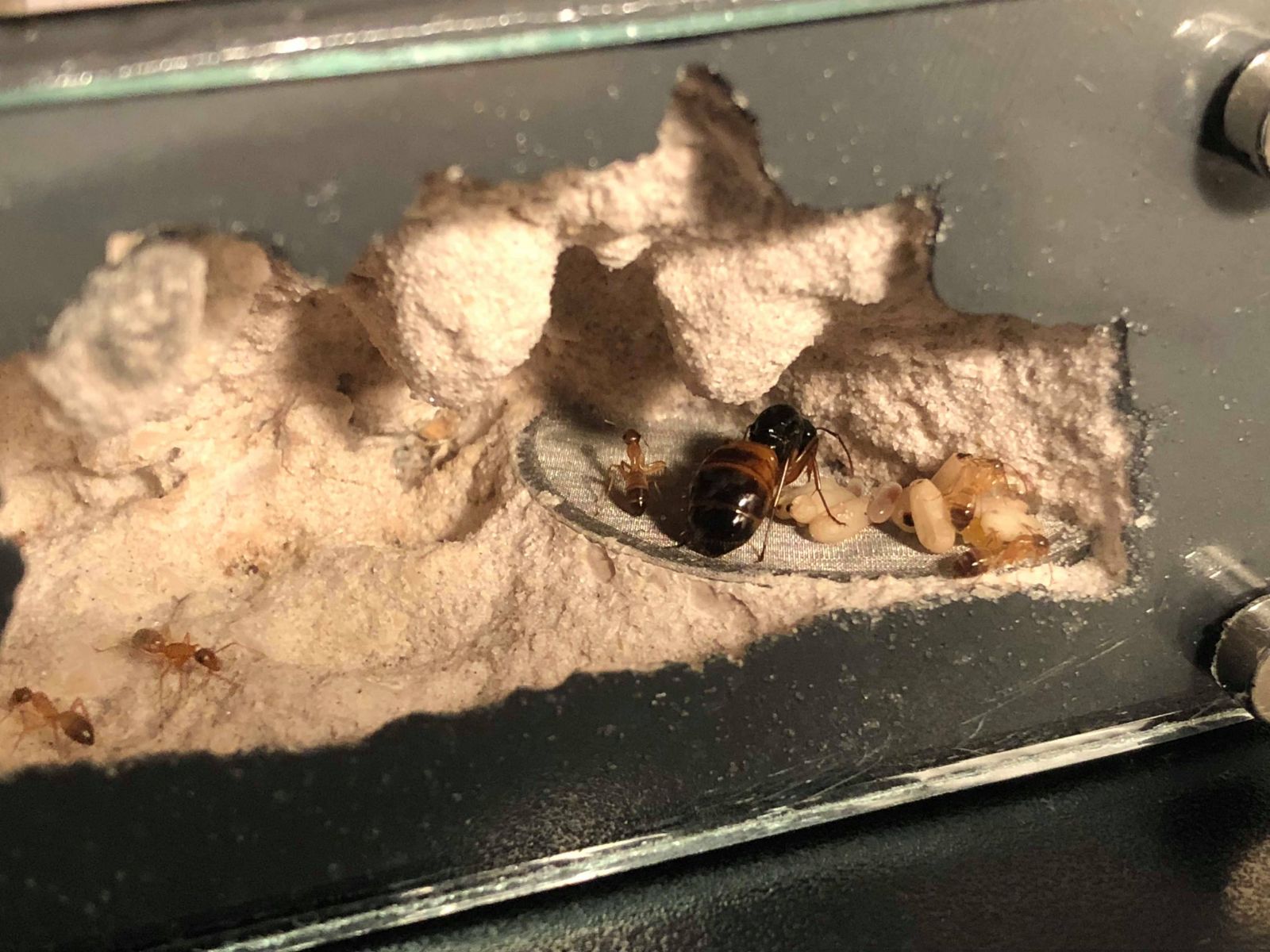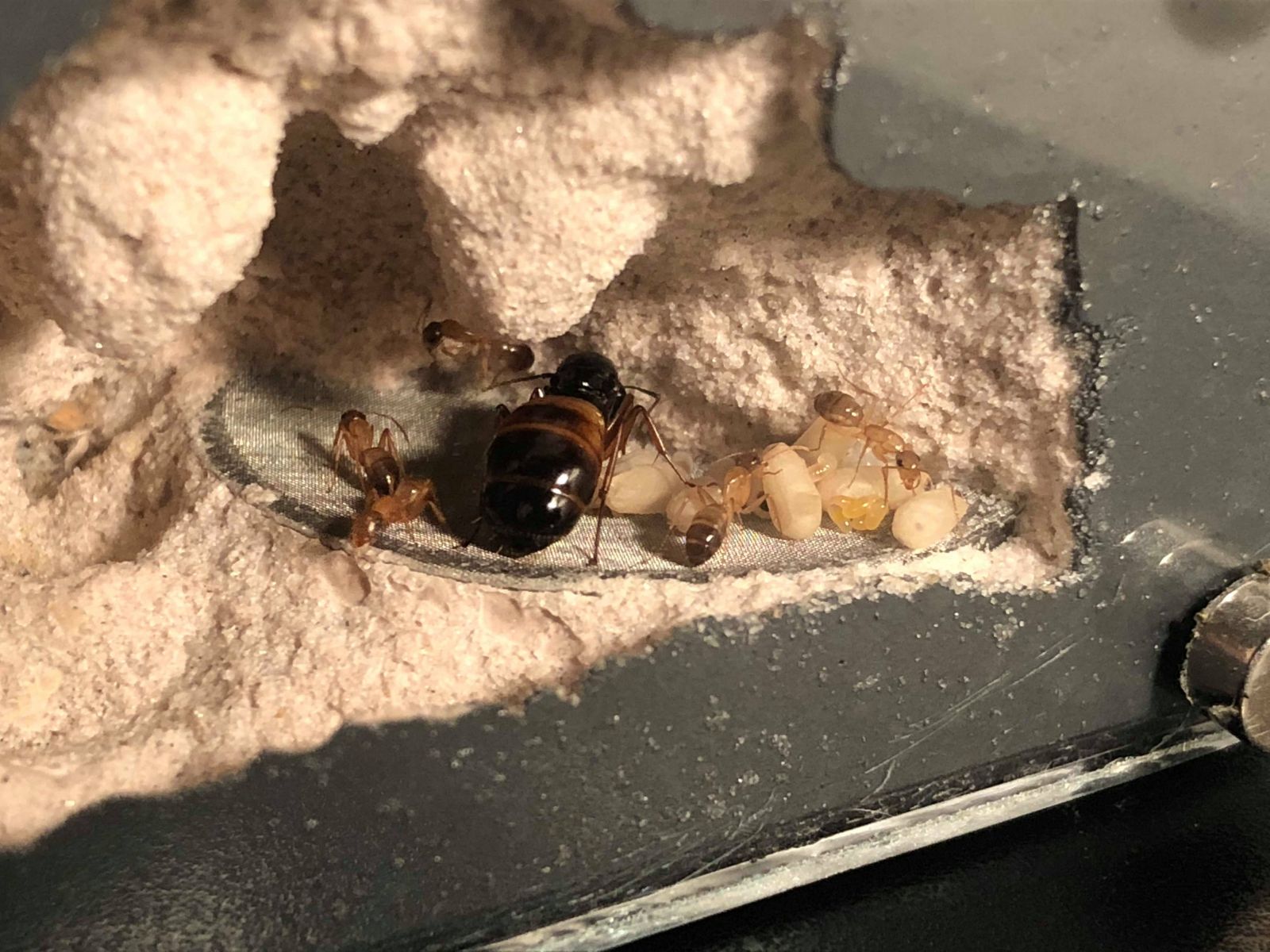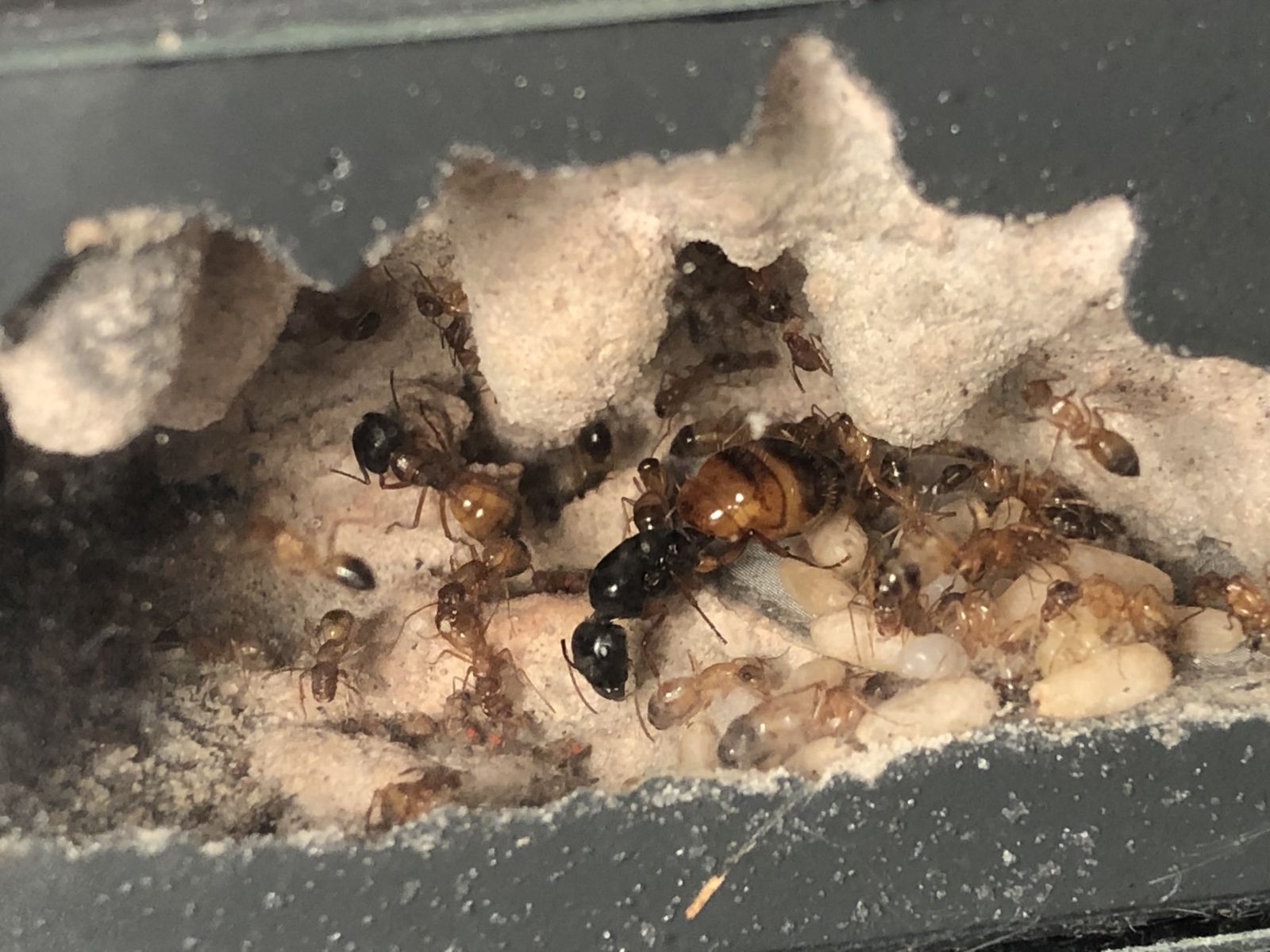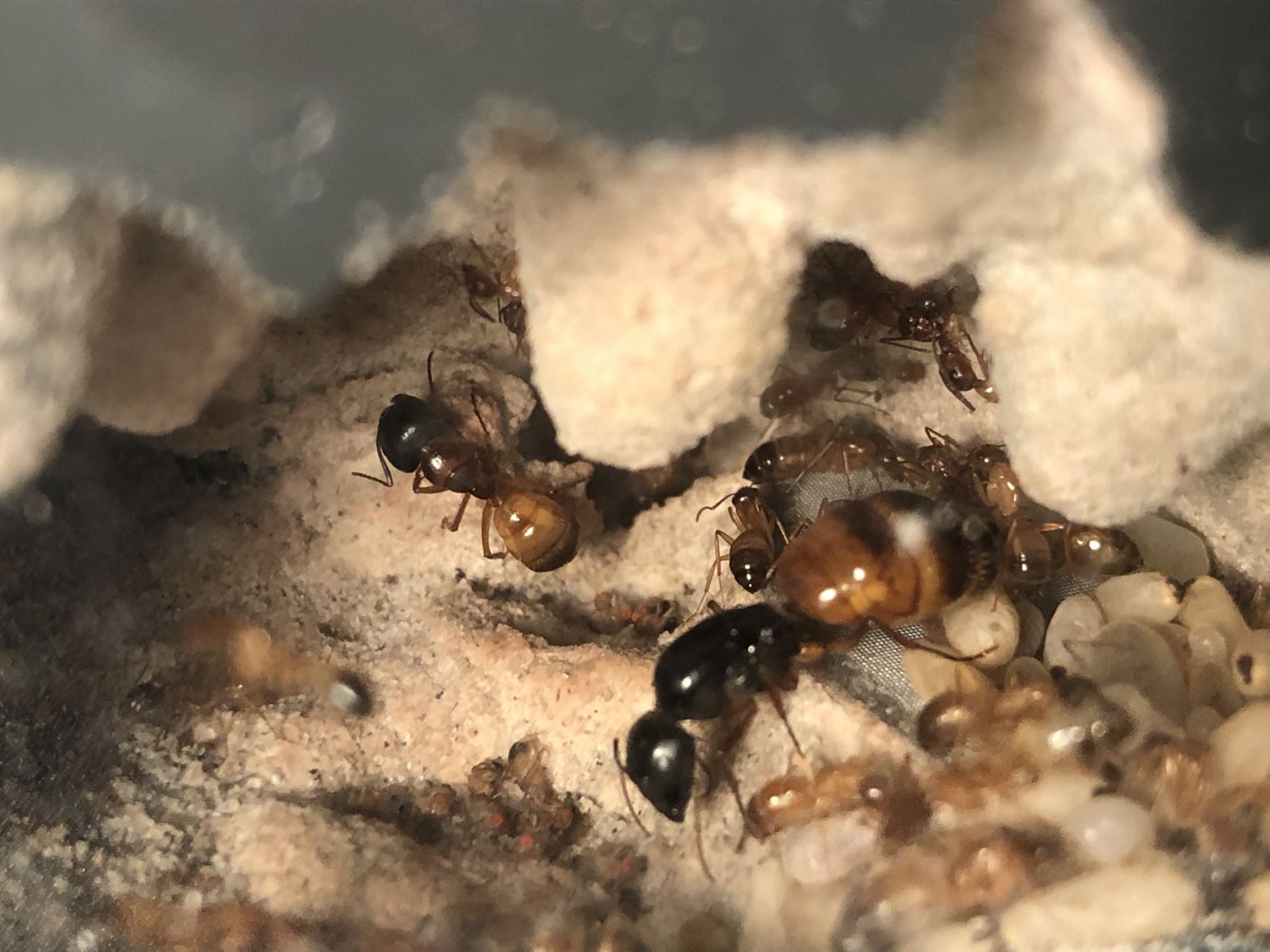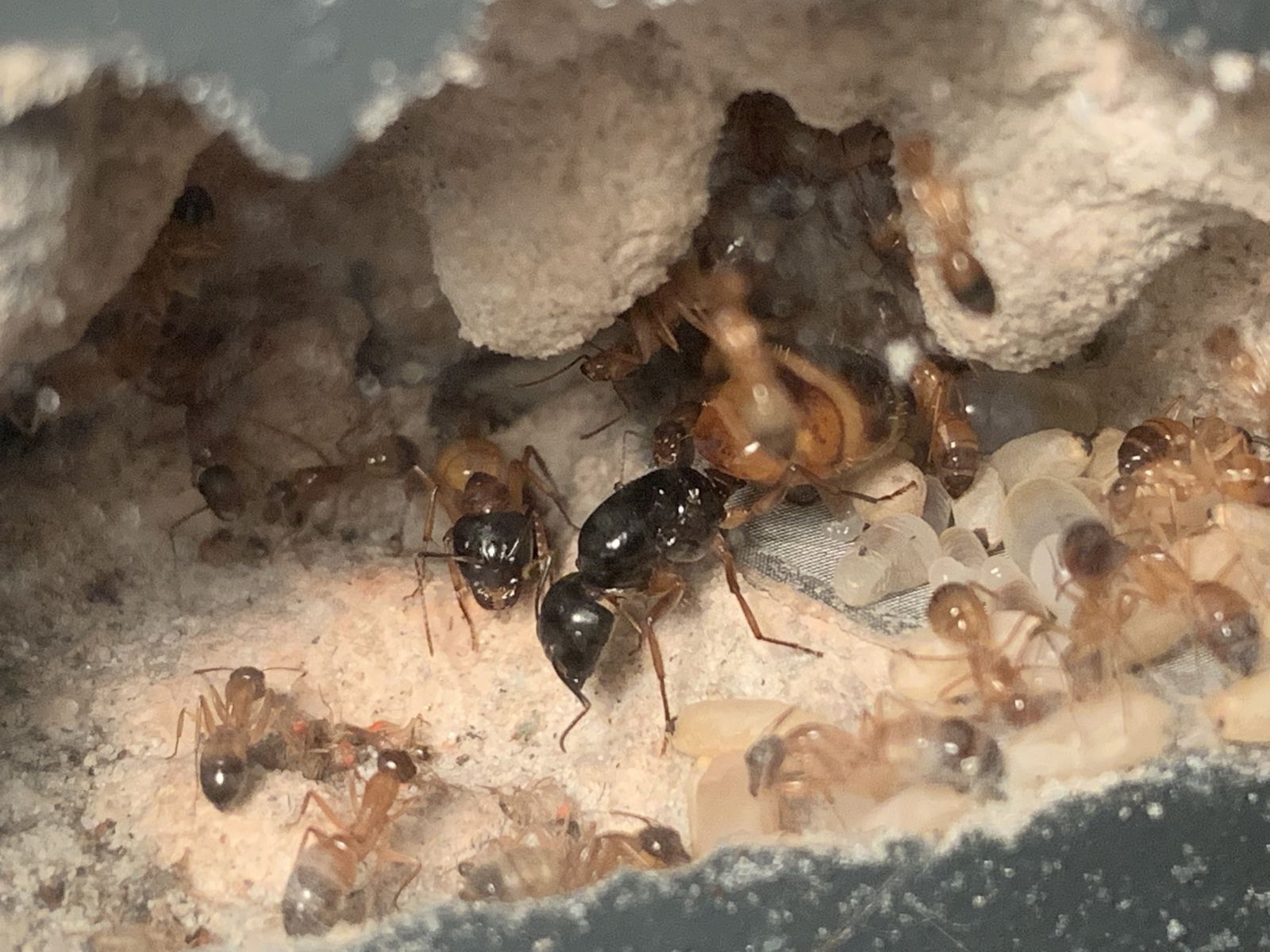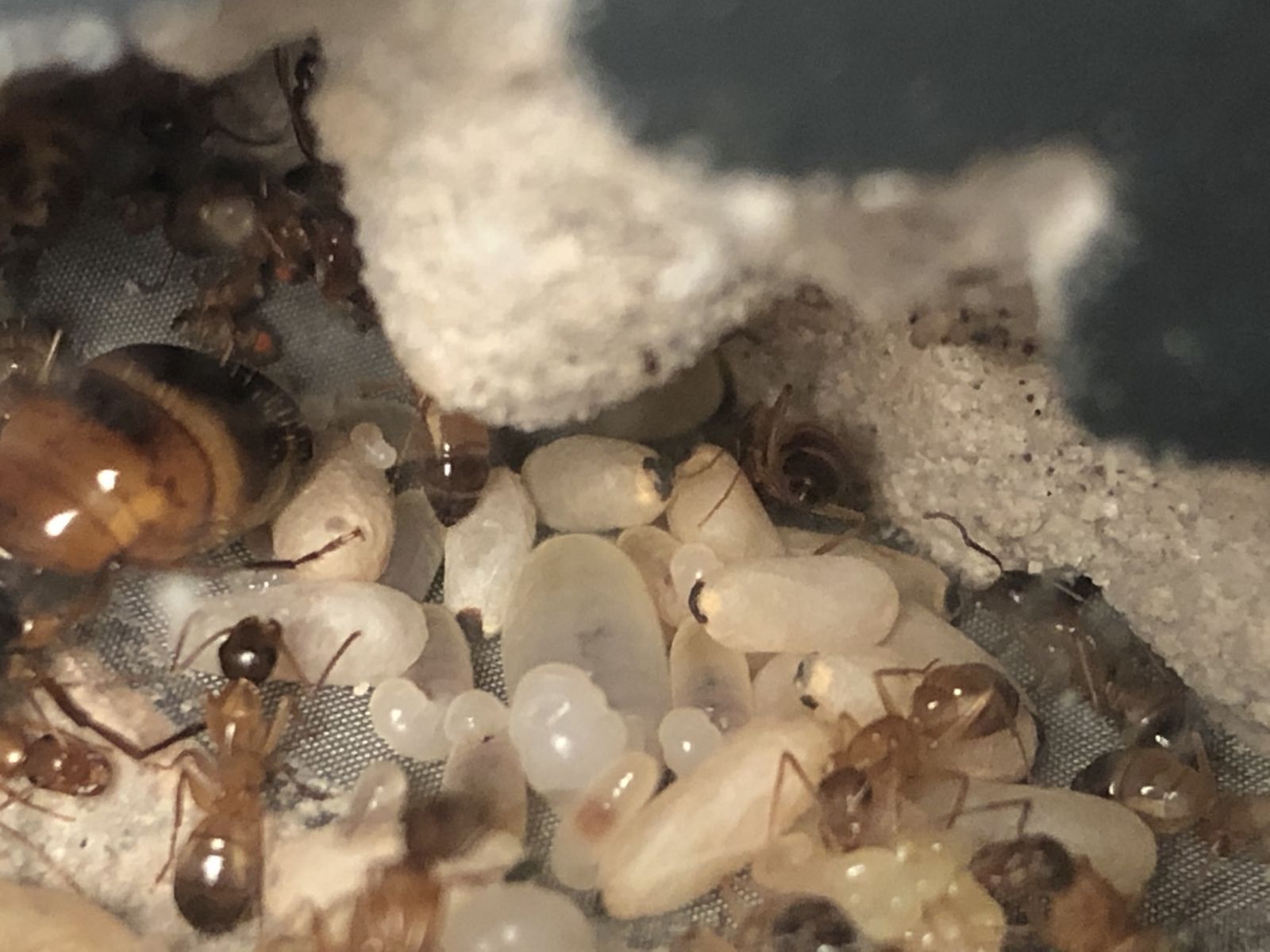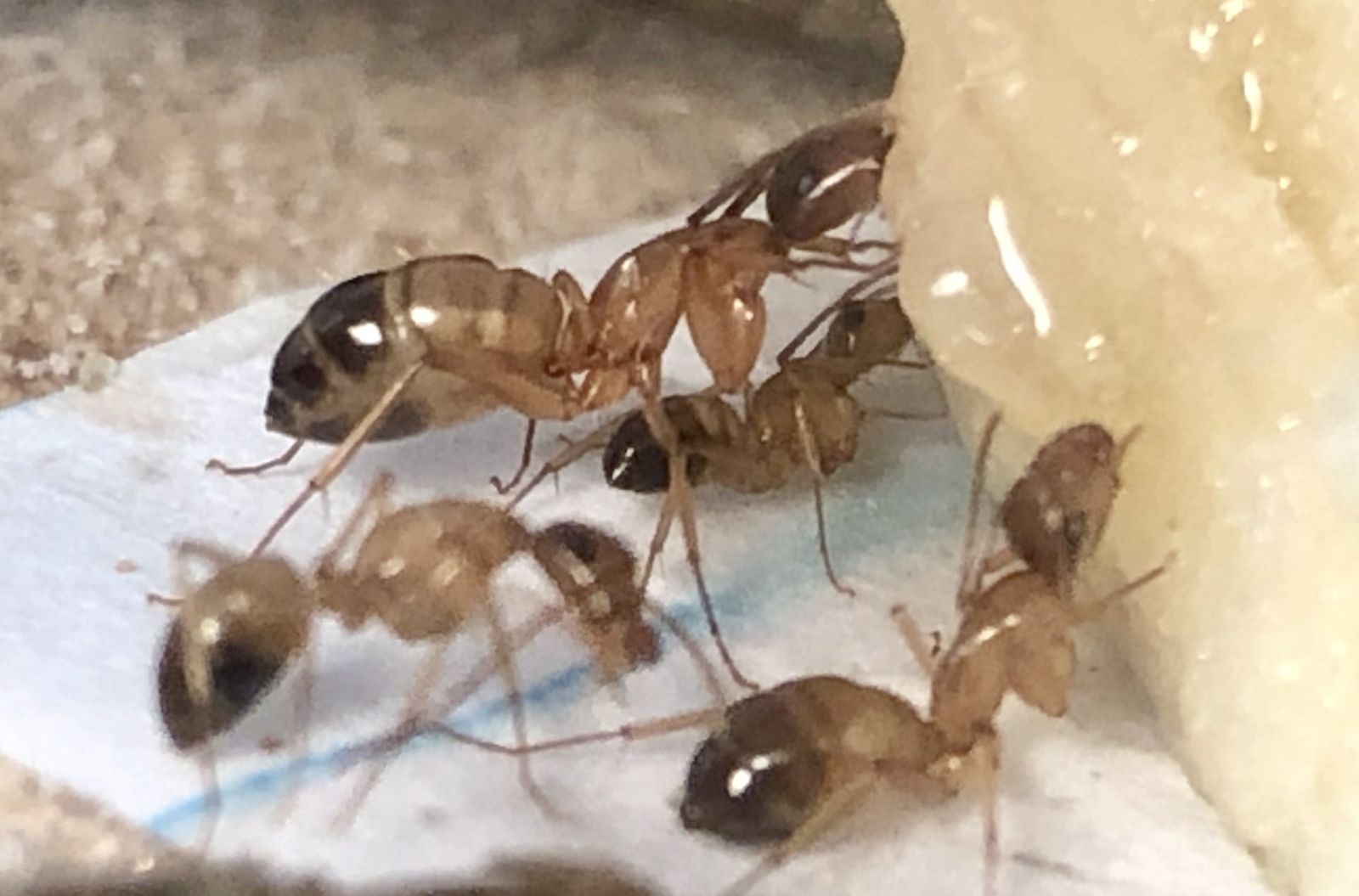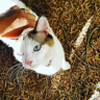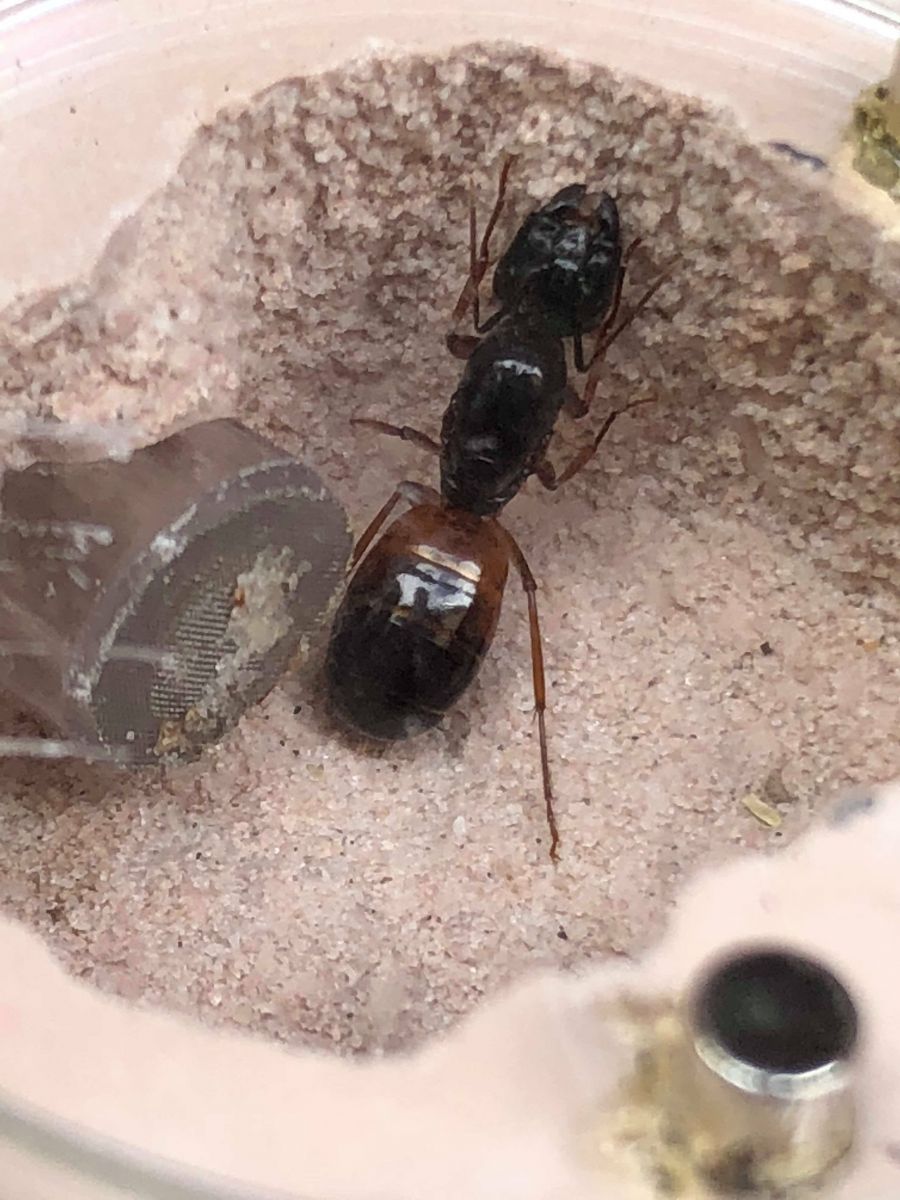
I found this queen on March 30th, 2018 around Tucson, AZ in the Coronado National Forest. She had dug her founding chamber conveniently under an obvious rock. After consulting antweb I identified her as Camponotus sansabeanus. After capture I homed her in a THA atom B formicarium, which she took to well. My girlfriend named her “Champagne.”
Like many other Camponotus queens, she was anxious, easily startled, and ate her eggs regularly in this founding stage. I started feeding her drops of honey on the inside of the nestmate when I refilled it with water, and this seemed to stop her from eating her eggs so much.
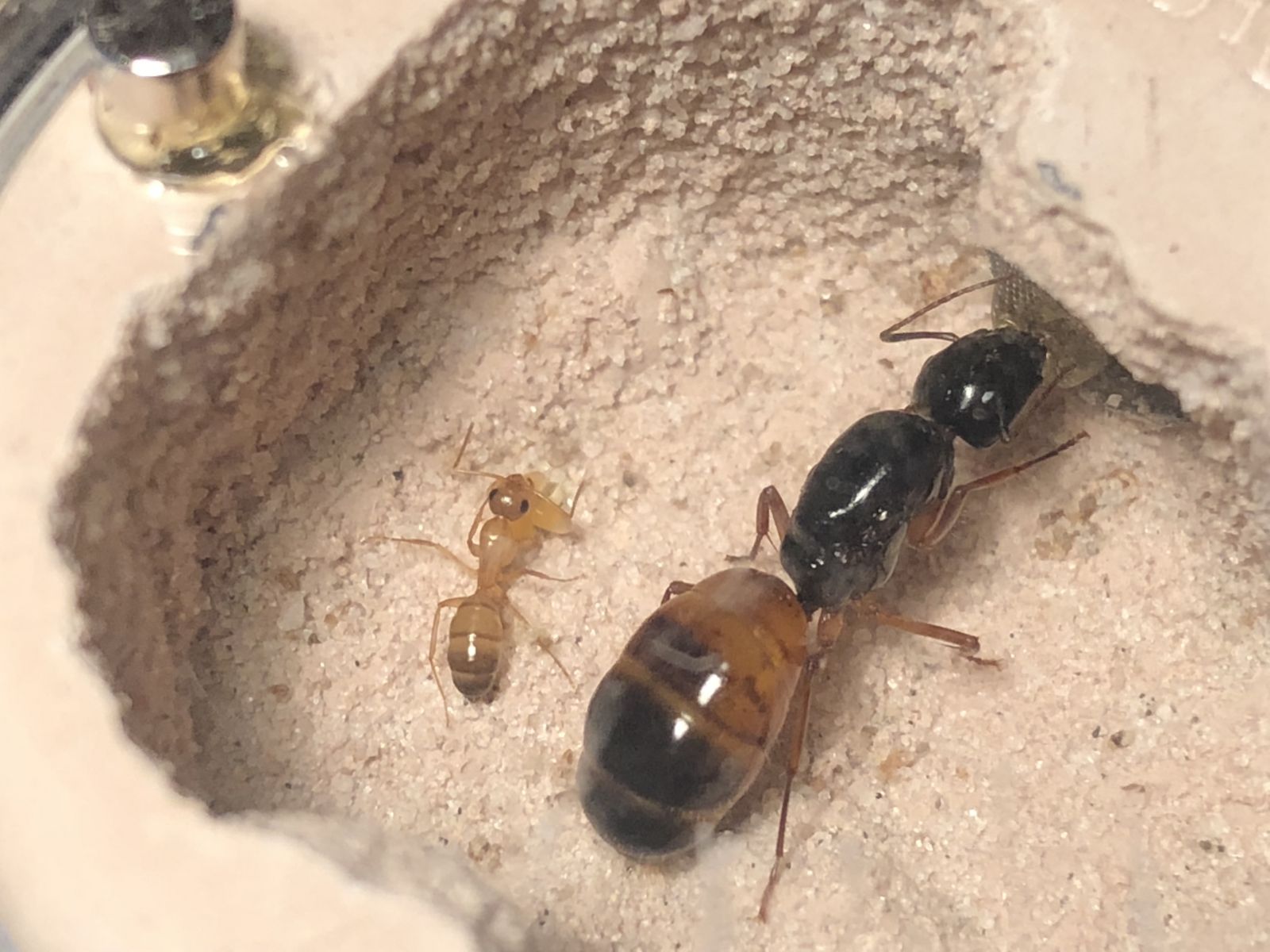
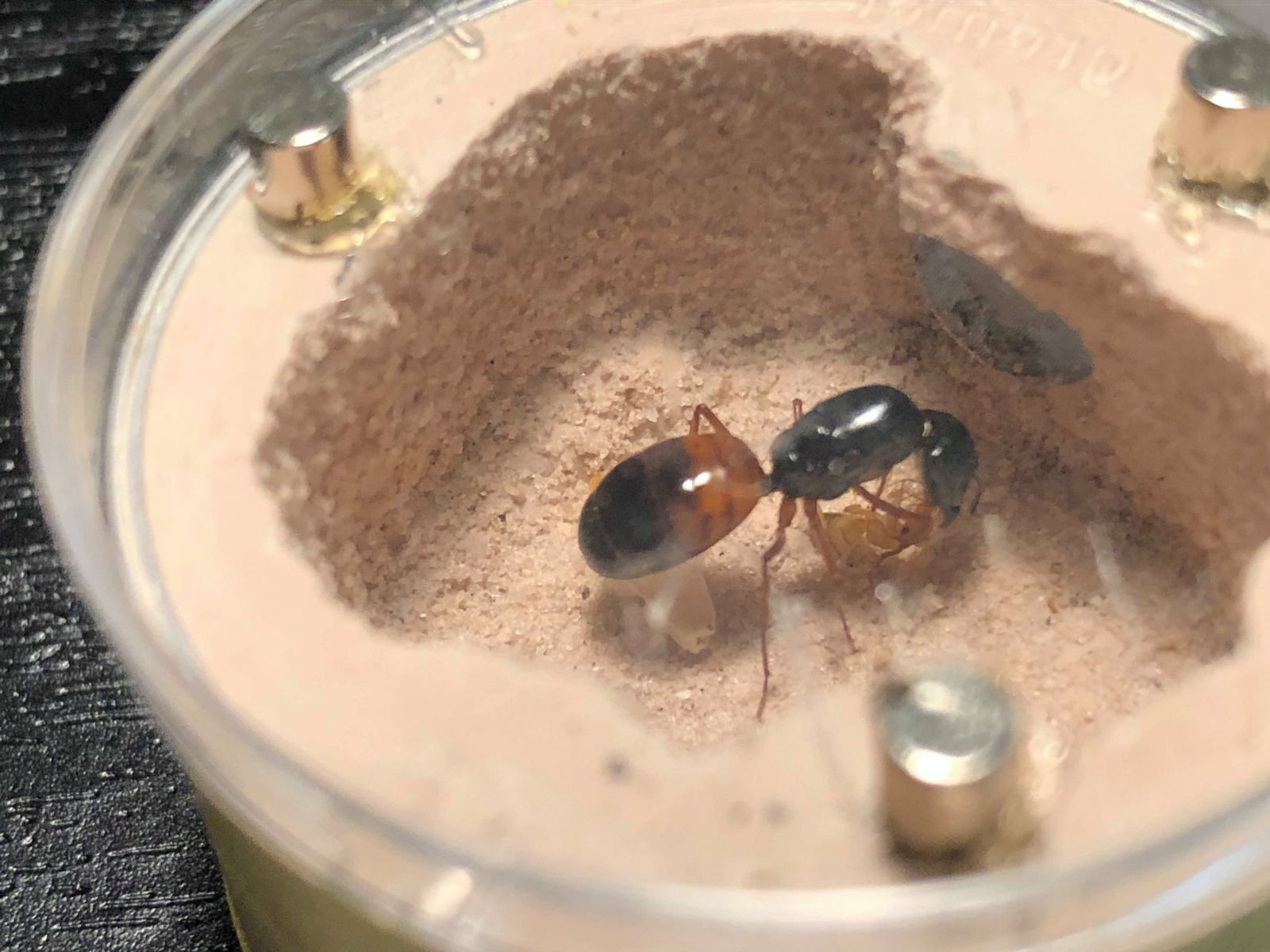
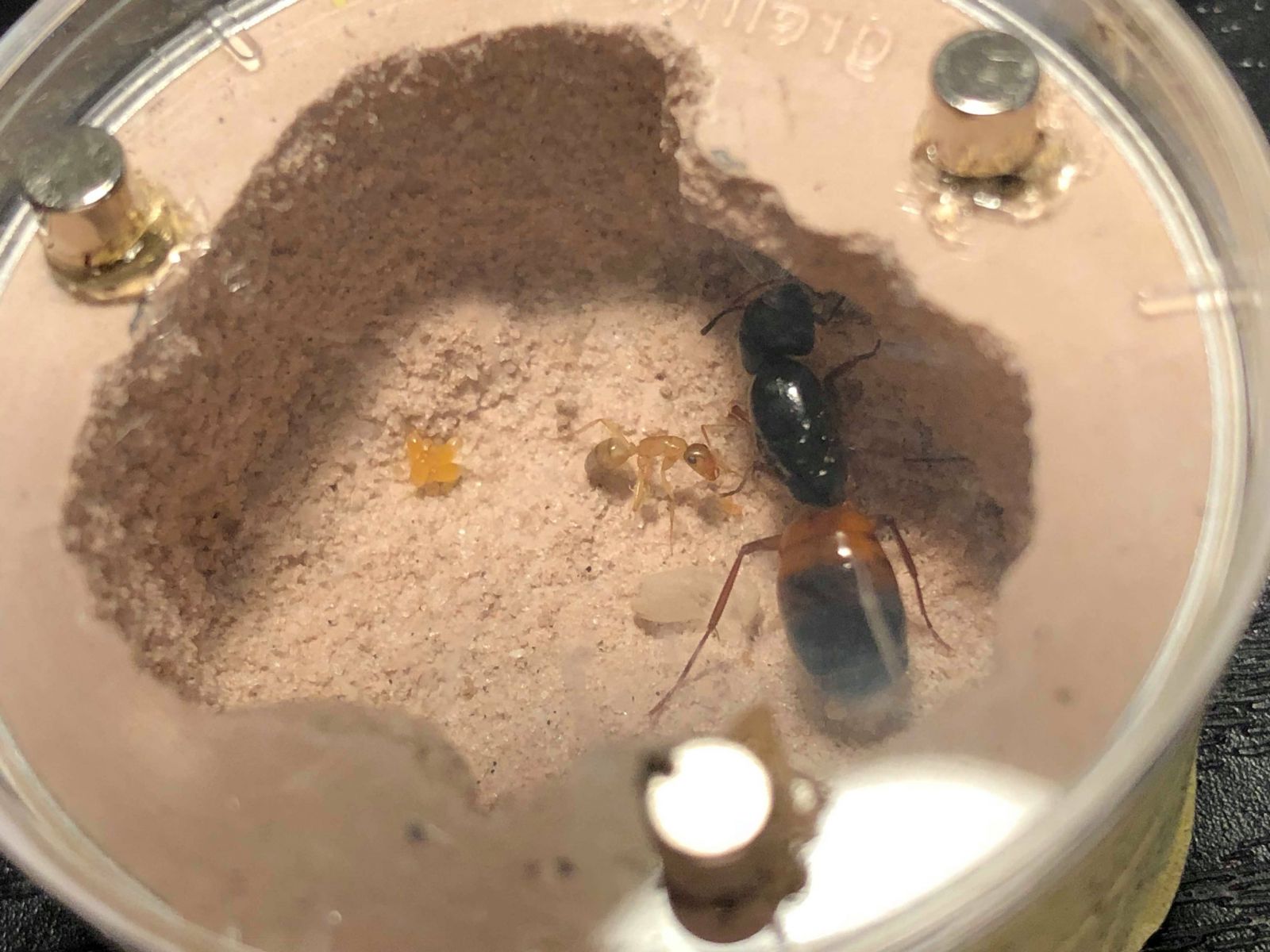
Champagne’s first worker eclosed on June 15th, 2018. I fed them again to celebrate—you can see the queen drinking from a honey droplet in the first photo above. I also caught a cute photo of her sharing her meal with her daughter. For some reason, this one ant was the only one to develop fully. The other brood only consists of a few eggs.
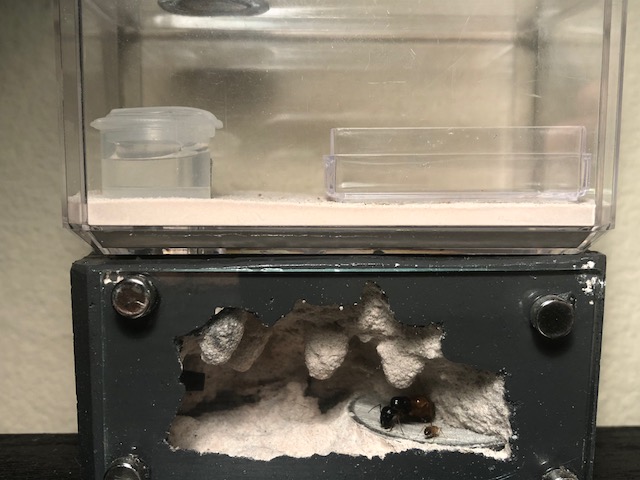
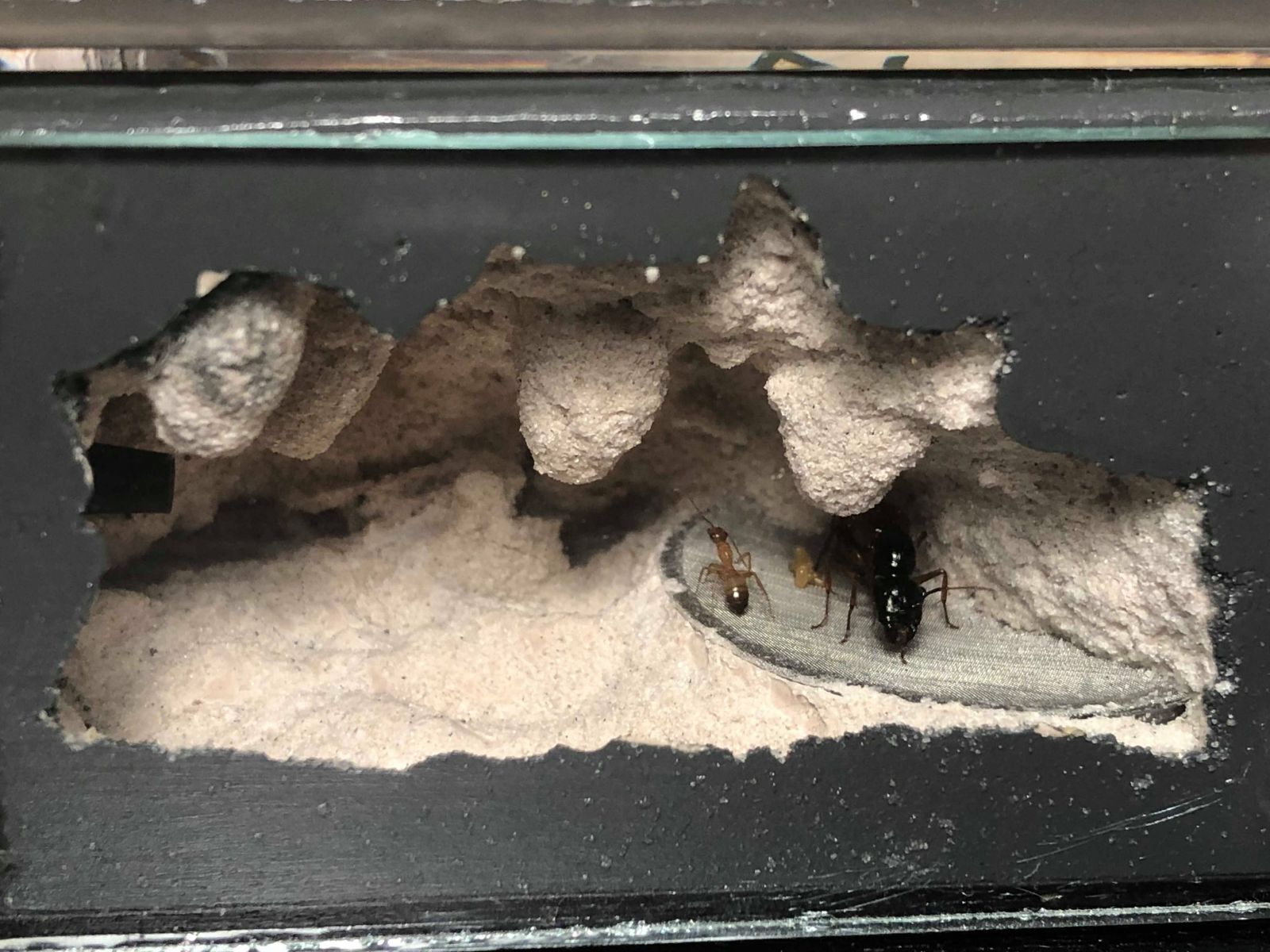
On June 22nd, I moved these two into a THA Mini Hearth so they could forage when ready. Still no larvae, just a small clutch of eggs. I placed a few dabs of honey in the feeding dish in the upperworld, and it went untouched.
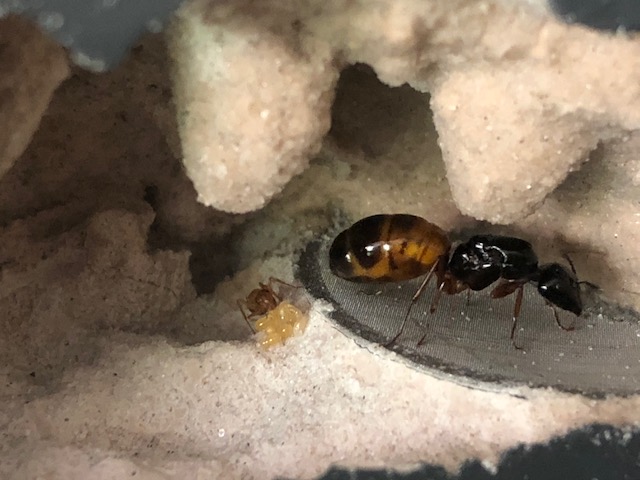
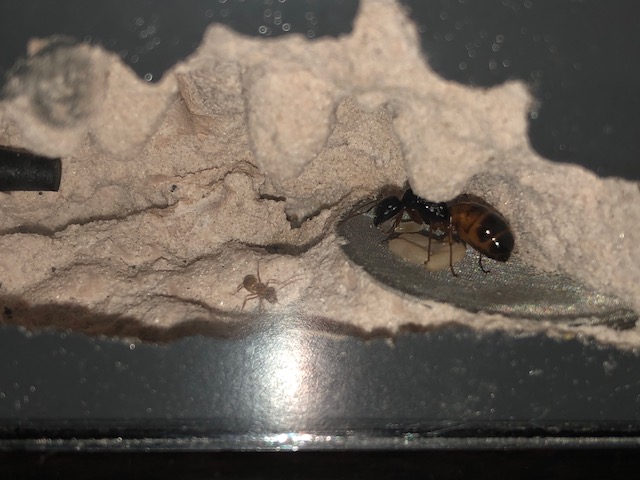
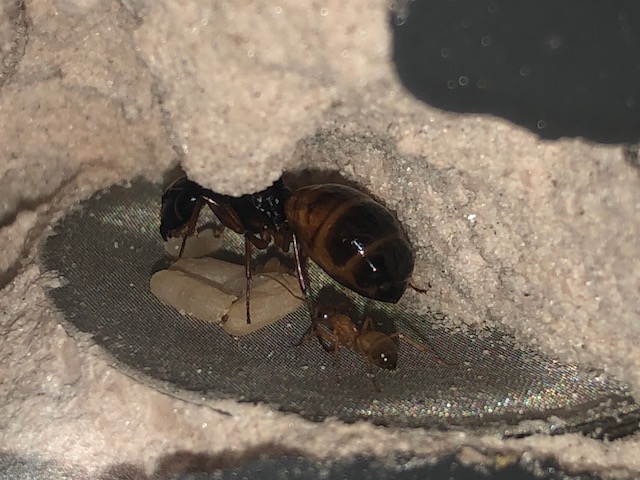
I got back from vacation on June (edit: July) 11th and was happy to find 3 pupae and a pile of larva with Champagne and her worker! More big gold ants coming soon! The honey droplets were probably found by the worker, as they are no longer on the feeding dish. It’s exciting to know that she’d been foraging. I placed a half of a cherry in their feeding dish along with a few frozen fruitflies.
More updates to come! I’m really excited to see the development of this colony.
Edited by giraffedom, July 16 2018 - 8:07 PM.






